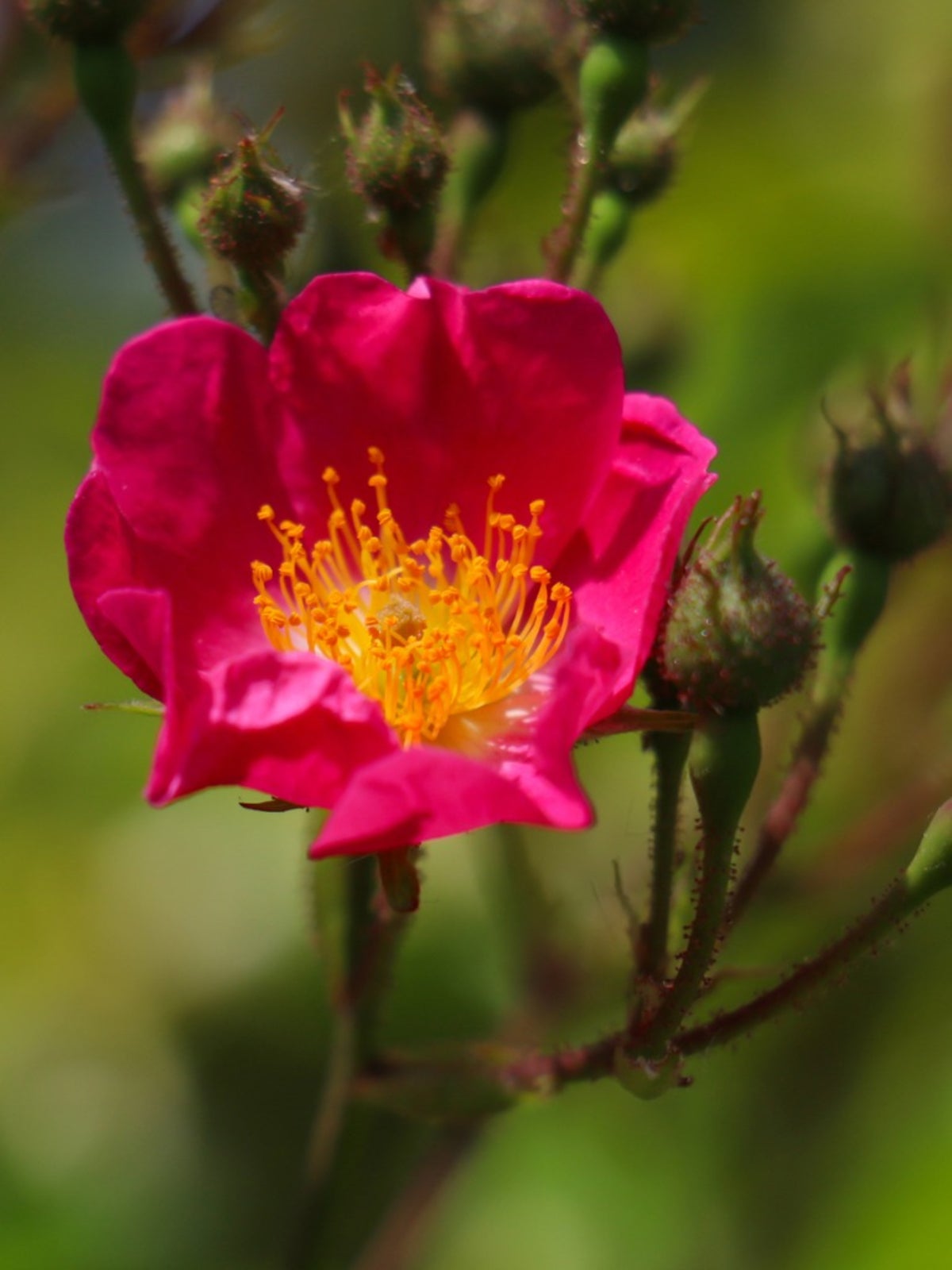Nootka Rose Info: History And Uses Of Nootka Wild Roses


One of the things I love about growing roses and gardening in general is that there is always something new to learn. Just the other day I had a nice lady ask me for help with her Nootka roses. I had not heard of them before and dug right into researching and found them to be a fascinating species of wild rose. Keep reading for more information about Nootka rose plants.
Nootka Rose Info
Nootka roses are basically wild, or species roses named after an island off Vancouver, Canada named Nootka. This wonderful rose bush separates itself from other wild roses in three ways:
- Nootka roses only grow in milder climates, receiving a minimum of 270 frost-free days, which would approximately be USDA zones 7b to 8b. Nootka roses can be found on the coast, along with the Clustered and Bald-Hip rose (Rosa gymnocarpa), but only in the warmest sites in the interior where the Wood's rose (Rosa woodsii) is common. Unlike the Bald-Hip rose, which thrives in a more alkaline and shaded woodland site from sea-level to 5,000 feet (1,524 m.) elevation, and the Clustered rose, which prefers a moist location, the Nootka rose is found in sunny, well-drained locations.
- The hips of the Nootka rose are large and round, being ½ to ¾ inches (1-2 cm.) long-- compared to the Bald-Hip rose, which has tiny hips of only ¼ inch (6 mm.) and the Clustered rose has larger, oblong hips.
- Nootka wild roses grow upright from 3 to 6 feet (1-2 m.) with stiff, erect stems or canes, while the Clustered rose is a larger plant, growing readily to 10 feet (3 m.) with gracefully arching canes. The Bald-Hip rose is much smaller, growing to only 3 feet (1 m.).
Uses of Nootka Rose Plants
Nootka rose plants can be found in several areas of the United States but may well have crossed with one of the other local wild/species roses, as it will easily cross with other such roses. The Nootka rose is a rose of many uses too:
- Research indicates that the early settlers to the United States, as well as the Native American Indians, ate Nootka rose hips and shoots during times when food was scarce. The Nootka rose hips were at the time the only winter food around, as the hips remained on the Nootka rose shrub during winter. Today, rosehip tea is commonly made by steeping the dried, ground hips in boiling water and adding honey as a sweetener.
- Some of the early settlers created eye washes for infections from the Nootka rose and also crushed the leaves and used them to treat bee stings. In our world today, rose hips are found in nutritional supplements, as they contain a large amount of vitamin C, even more than oranges. They also contain phosphorus, iron, calcium, and vitamin A, all of which are necessary nutrients for maintaining good health.
- The dried leaves of Nootka wild roses have been used as an air freshener, similar to potpourri, as well. Chewing up the leaves has even been known to freshen one's breath.
Sign up for the Gardening Know How newsletter today and receive a free copy of our e-book "How to Grow Delicious Tomatoes".

Stan V. Griep contributed to Gardening Know How for many years and has been a Colorado Native Rosarian for over four decades. He is an American Rose Society Certified Consulting Master Rosarian in the Rocky Mountain District, and a member of the Denver Rose Society, the Loveland Rose Society, and the American Rose Society. He is Gardening Know How's in-house expert on all things roses.